Mixing vocals is an invaluable music production process that can help you seriously enhance your tracks.
It can transform a good vocal performance into a great one, and it has the power to elevate a song from ordinary to extraordinary.
As well as being a technical skill, it’s an expression of creativity 一 allowing you to shape and mold the vocal sound to fit perfectly within your track.
So, as a music producer, it’s important to know all about how to expertly mix vocals in order to create a polished, professional sound that captivates your audience.
And, of course, vocals that stand out in the competitive world of music production.
In today’s article, we’ll break down:
- The essentials of vocal mixing for professional vocals ✓
- Key components of a vocal track ✓
- Techniques for cleaning and preparing vocal recordings ✓
- Setting up an effective vocal mixing chain ✓
- The intricacies of EQing for clarity and presence ✓
- Dynamics control and compression techniques ✓
- Adding and balancing spatial effects ✓
- Creative approaches to enhancing vocals ✓
- Advanced methods for dealing with noise and achieving vocal thickness ✓
- The importance of AUX channels and buses ✓
- Using a reference track for a consistent sound ✓
- Much more about how to mix vocals ✓
After diving into this article, you’ll be able to mix vocals like a true professional, learning all the tips, tricks, and techniques needed to ensure your vocal tracks shine.
You’ll also understand how to navigate the challenges of vocal mixing, bringing out the best in every performance.
So, let’s dive in…
Table of Contents
- Why Are Mixing Vocals So Important?
- Key Components of a Vocal Track
- Preparing Your Vocal Tracks
- Setting Up Your Vocal Chain
- The Role of Vocal EQ in Shaping Sound
- Identifying and Handling Problematic Frequencies
- Compression and Dynamics Control
- Advanced Techniques: Serial Compression
- Adding Spatial Effects to Vocals
- Enhancing Vocals with Creative Effects
- Pro Tip: Utilizing AUX Channels and Busses
- Mixing Vocals: Final Thoughts
Why Are Mixing Vocals So Important?

Vocal mixing is a pivotal step in music production, especially in the digital realm.
It’s the process of blending and enhancing vocal recordings to help your vocals and your mix sound professional.
Mixing vocals involves various techniques, such as:
- EQing
- Compression
- Adding effects
It ensures that your vocals not only sound great on their own but also complement the other elements of the track.
This process can make or break a song, as the human voice is often the central point of a listener’s attention.
The art of mixing vocals is all about technical proficiency and understanding the emotional intent behind the vocal performance.
A good mix preserves the emotive quality of the vocals and ensures that the listener connects with the song.
Mixing vocals requires a careful balance; enhancing the vocal sound without losing its natural essence.
This involves making subtle adjustments to various parameters.
Which, in turn, makes sure that every nuance of the vocal performance is captured and presented in the best possible light.
The key to successful vocal mixing lies in a systematic approach 一 starting with a solid understanding of the basics and gradually incorporating more complex mixing techniques.
Remember, mixing vocals is not just about manipulating frequencies and dynamics…
It’s about bringing a vocal performance to life as music producers.
Key Components of a Vocal Track
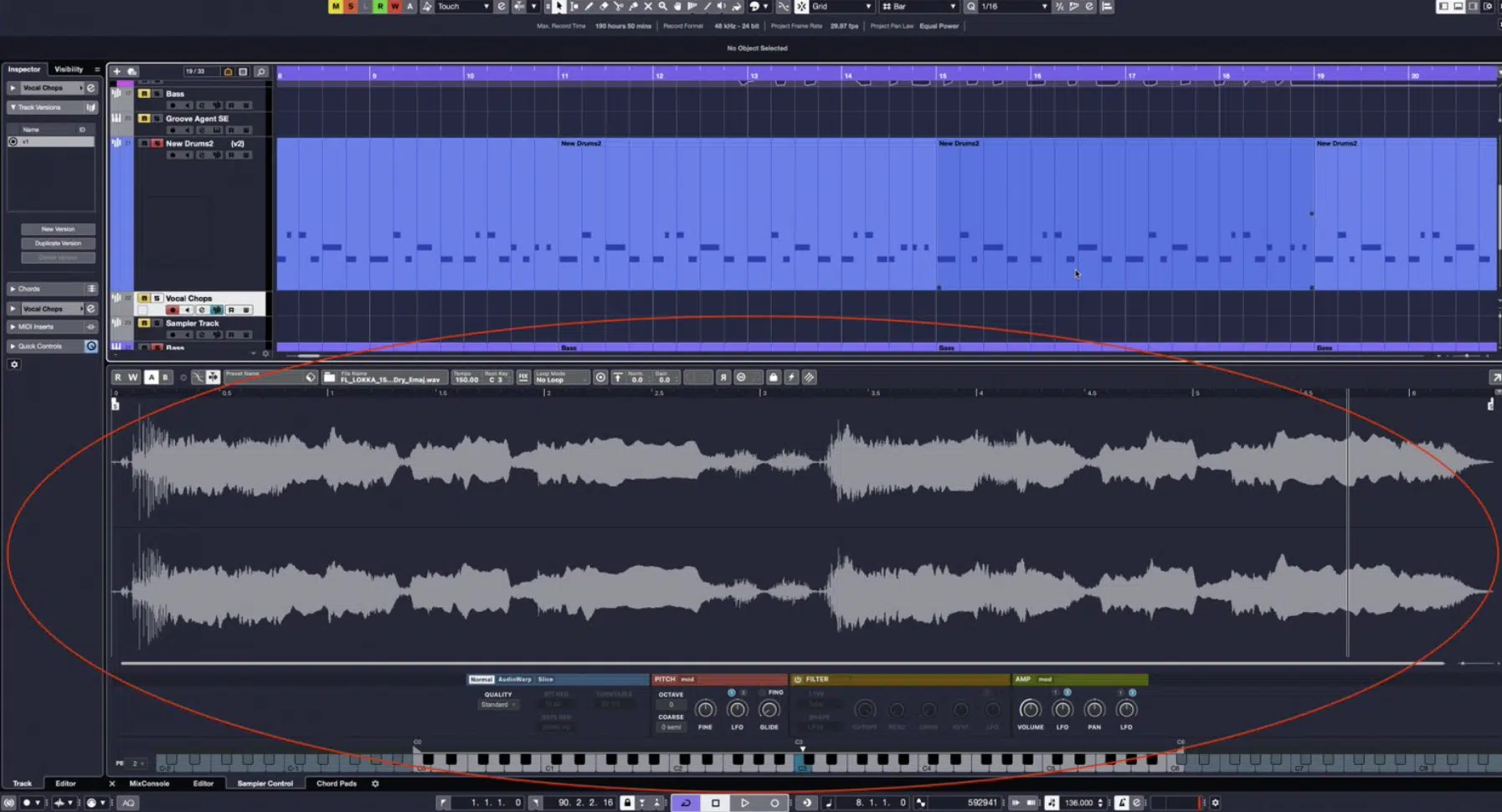
Understanding the key components of a vocal track is super important when you’re mixing vocals.
The primary element is the main vocal or lead vocal, which is the focal point of most songs and carries the melody and lyrics.
The lead vocal should be clear, expressive, and well-positioned in the mix to capture the listener’s attention.
It’s important to ensure that the lead vocals are free from unwanted noise and have a dynamic range that fits the song’s emotional context.
Backing vocals and harmonies form another critical component.
These elements add depth and richness to the track 一 supporting the lead vocals.
Mixing backing vocals involves balancing them against the lead, ensuring they complement rather than overpower.
Attention should be paid to their panning, volume, and EQ settings to create a cohesive vocal sound that enhances the overall mix.
Other components include:
- Ad-libs
- Vocal doubles
- Any creative effects applied to the vocals
Ad-libs can add flair and personality to a track, while vocal doubling can thicken the sound and add fullness.
Creative effects, when used sparingly, can bring a unique character to the vocal track.
Understanding how to mix these components effectively is crucial for achieving a polished and professional vocal sound.
Preparing Your Vocal Tracks
Before diving into the intricacies of mixing vocals, it’s essential, as music producers, to prepare your vocal tracks properly. A well-prepared vocal track lays the foundation for a smooth mixing process and a professional-sounding final product.
-
Cleaning Up Your Vocal Recordings
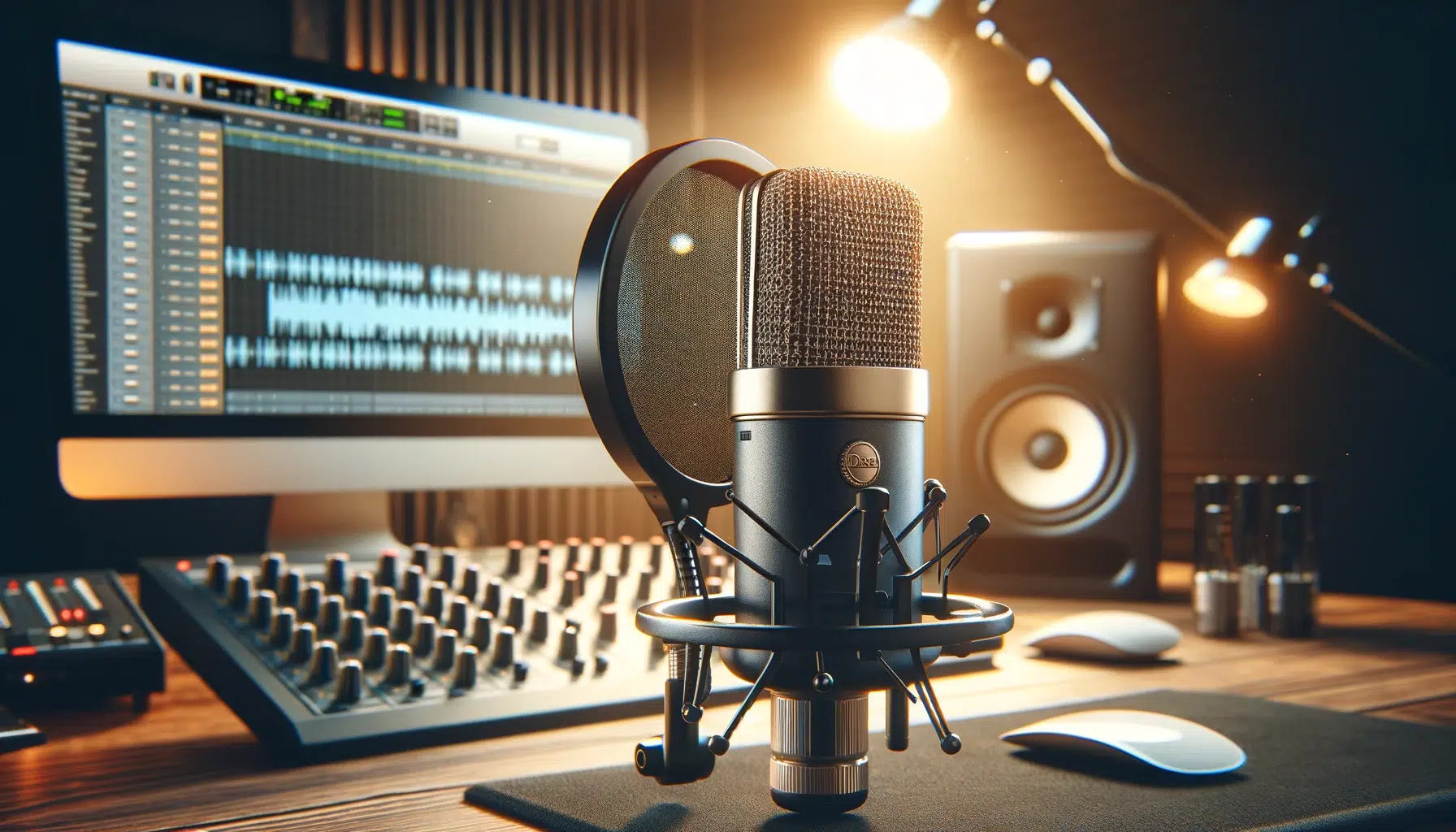
#1. The First Step in Preparing Your Vocal Tracks is Cleaning Them Up.
This involves removing any unwanted noise, such as unwanted background noise or breath sounds, which can distract from the clarity of the vocal performance.
Use noise gates or manual editing to eliminate these distractions.
#2. Pay Attention to the Timing and Tuning of Your Vocal Takes
Paying attention to the timing and tuning of your vocal takes can save you a lot of time and frustration during the mixing process.
#3. Another Aspect of Cleaning up Vocal Recordings is Ensuring a Consistent Level Throughout the Performance.
This can be achieved through gain automation or by manually adjusting the levels of different sections.
Consistent levels not only make the mixing process easier but also contribute to a more professional vocal sound.
#4. Utilizing Various Miking Techniques is Crucial for Capturing a Quality Vocal Recording.
These include using a cardioid pattern for focused sound capture and experimenting with microphone placement for desired tonal qualities.
In other words, the right miking techniques can significantly diminish the necessity for extensive post-processing.
-
PRO TIP: Vocal Comping for the Best Takes
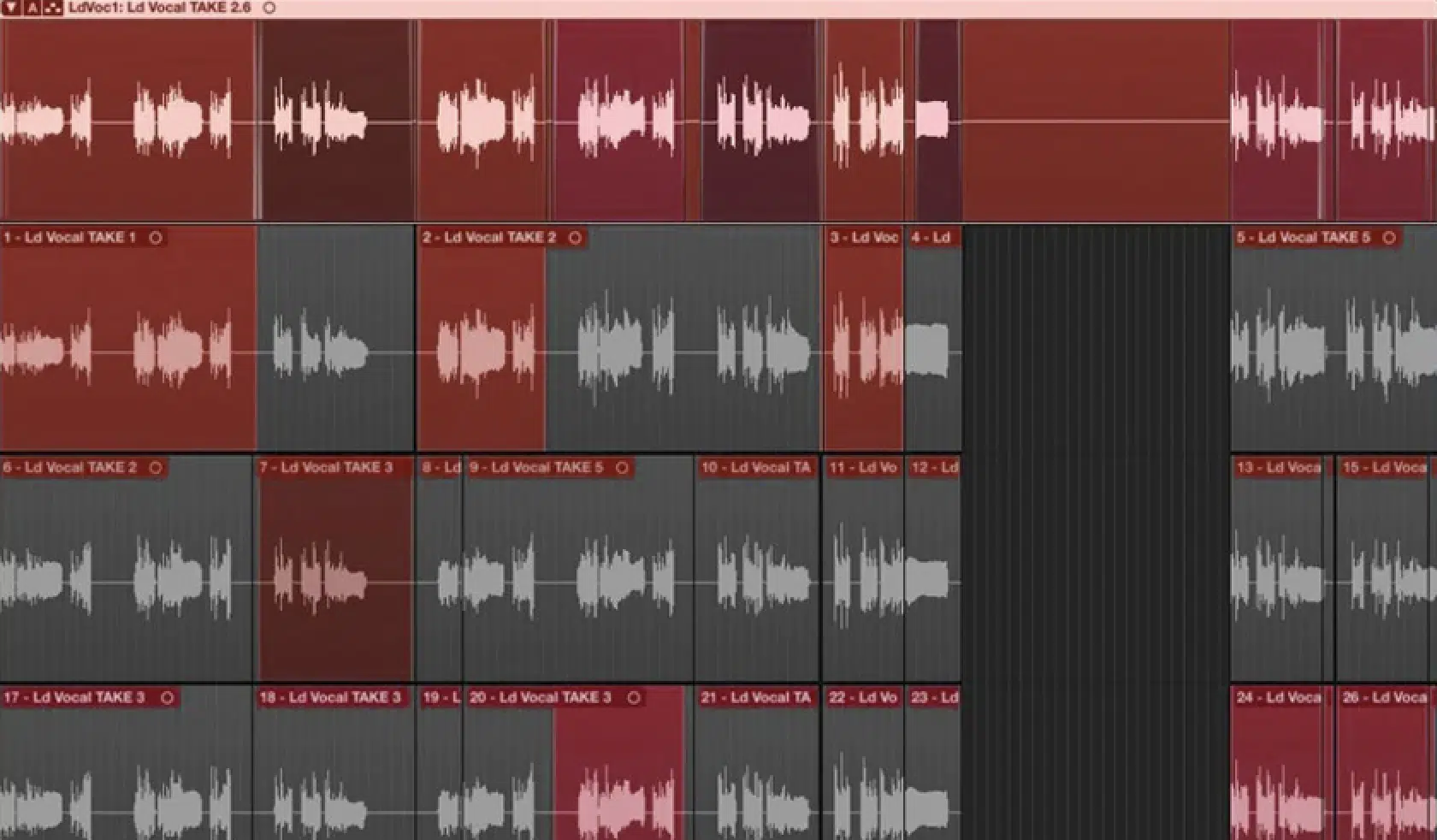
Vocal comping is a production technique used to create the perfect vocal take from multiple recordings.
The vocal comping process involves listening to each take and selecting the best parts of each to compile a single, flawless performance.
When vocal comping, look for moments where the emotion, tone, and pitch are most effective and splice these together seamlessly.
It’s also important to ensure that the comped vocal track sounds natural, so pay attention to breath sounds and make sure the transitions between different takes are smooth.
This helps maintain the illusion of a single, continuous performance, which is crucial for the listener’s immersion in the song and mixing vocals in general.
-
Addressing Pitch Imperfections
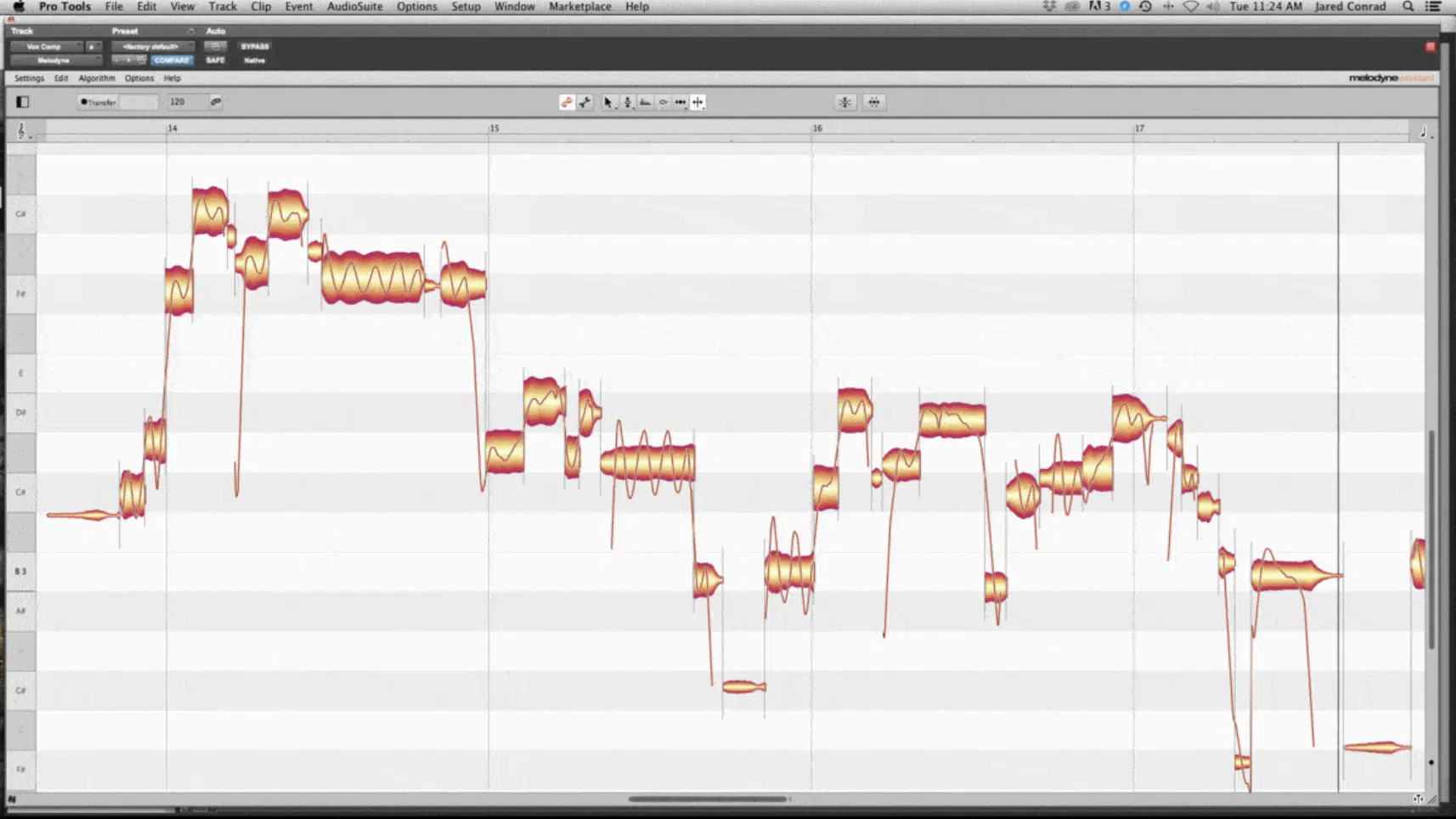
While a natural and expressive vocal performance is key, addressing pitch imperfections is also essential when it comes to mixing vocals.
Tools like pitch correction software can be used to subtly adjust off-key notes 一 ensuring that the vocal performance is pitch-perfect without losing its natural feel.
The goal is to use pitch correction carefully.
NOTE: Overuse can lead to an unnatural, robotic sound, which might be undesirable unless it’s a stylistic choice for the track.
The best approach is to correct only the most noticeable pitch issues and leave minor imperfections that add character to the vocal performance.
Remember, when you’re mixing vocals, pitch correction is not a substitute for a good vocal performance 一 it’s a tool to enhance what’s already there.
Therefore, it’s crucial to start with the best possible vocal takes before relying on pitch correction.
Setting Up Your Vocal Chain
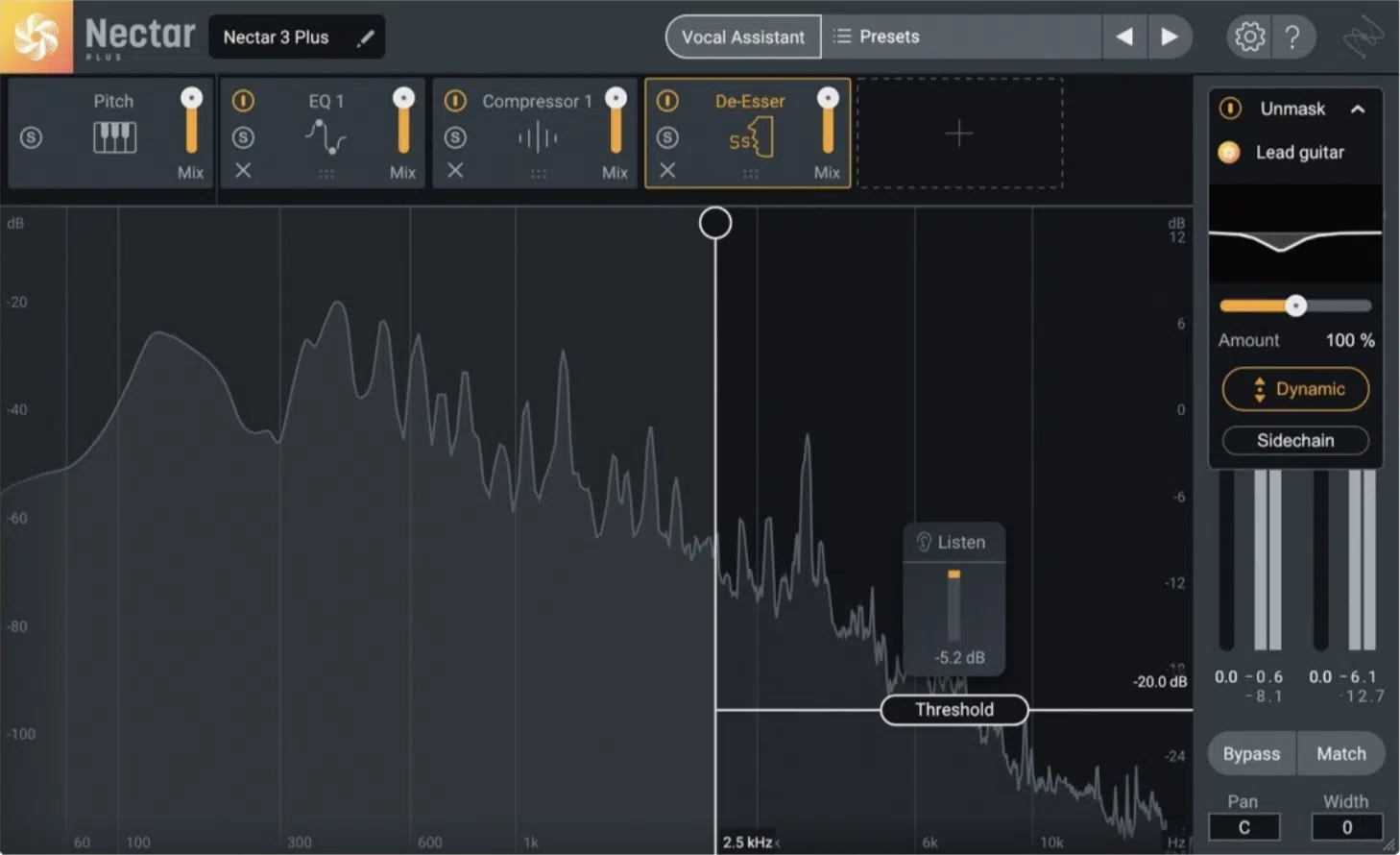
The vocal chain is the series of effects and processors applied to the vocal track during mixing.
A typical vocal chain might include:
- An EQ
- A compressor
- A de-esser
- Various effects like reverb and delay
The order of these elements can significantly impact the sound of the vocals and your vocal mixing process.
Generally, EQ and compression come first to shape the different tone variations and dynamics, followed by effects that add spatial qualities.
NOTE: By carefully adjusting the EQ and compression on the vocal channel, you can enhance the clarity and presence of the vocals.
This will ensure that the vocal channel sits perfectly in the mix.
When setting up your vocal chain, consider the unique characteristics of the vocal performance and the overall style of the track.
For instance, a ballad might require a more delicate and subtle vocal chain 一 while a rock track might benefit from more aggressive settings, like compression and EQ.
Flexibility is key in setting up a vocal chain.
Be prepared to adjust settings and swap out processors as you listen and refine the mix.
Remember, the goal is to enhance the vocal performance, not overshadow it with excessive processing.
Each element in the vocal chain should serve a specific purpose, so keep that in mind.
Whether it’s to add clarity, control dynamics, or impart the vocal sound with a particular character that suits the music production style you’re aiming for, the purpose matters.
The Role of Vocal EQ in Shaping Sound
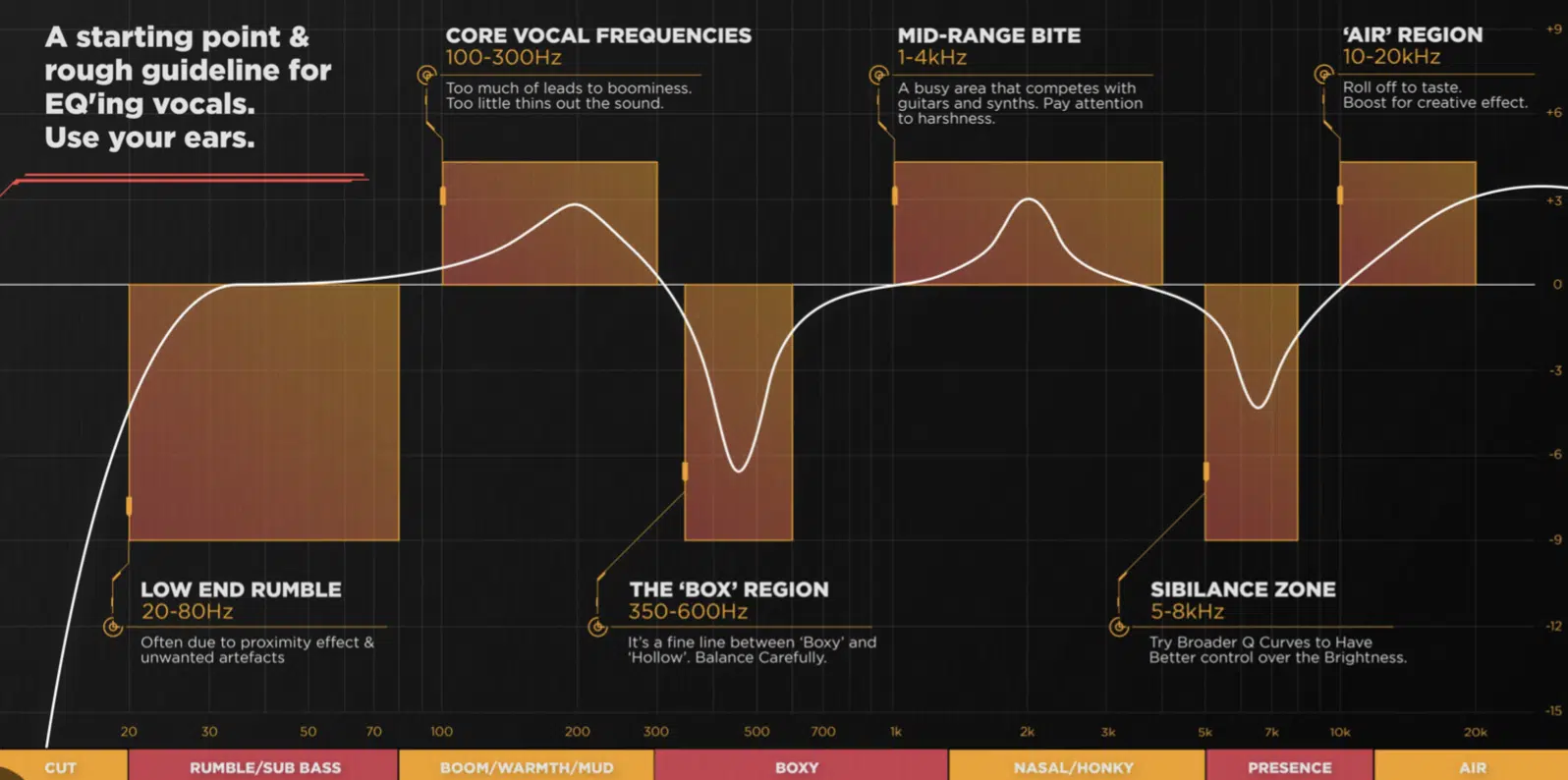
EQing is pivotal in mixing vocals as it helps in carving out a distinct space for the vocals within the frequency spectrum of the track.
The primary goal of vocal EQ is to enhance the natural qualities of the vocal sound while ensuring it doesn’t clash with other instruments.
For example, applying a high-pass filter to remove unwanted low frequencies can prevent the vocals from competing with the bass and kick drum.
It’s also important, when you’re dealing with vocal EQ, to identify and boost the frequencies that contribute to the intelligibility and character of the vocals.
This often involves subtle boosts in the mid to high-frequency range, which can help the vocals cut through a busy mix.
However, if you want to help your vocal stand out, not stick out, it’s crucial to avoid over-EQing, as this can lead to an unnatural and harsh vocal sound.
When EQing vocals, consider the overall tonal balance of the mix.
Sometimes, what the vocals need is not more boosting but rather a slight reduction in certain frequencies to make room for other elements in the mix.
NOTE: This approach, often referred to as ‘subtractive EQ,’ can lead to a more natural sound and cohesive mix.
Identifying and Handling Problematic Frequencies
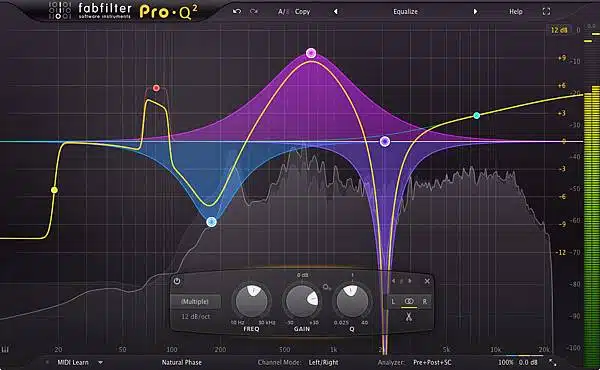
A key aspect of EQing vocals is identifying and handling problematic frequencies.
These are harsh frequencies that cause the vocals to sound:
- Muddy
- Boxy
- Overly sibilant
- Unprofessional
For instance, frequencies around 200-500 Hz can often contribute to a ‘boxy’ vocal sound, and reducing these can add clarity to the vocal performance.
Sibilance, the harsh ‘s’ or ‘sh’ sounds in vocals, is another common issue.
It typically occurs in the 5-8 kHz range and can be addressed with a de-esser or targeted EQ cuts.
This helps in achieving a smoother vocal sound without losing the overall brightness and clarity, which is very important.
Another problem area can be the low mids, where too much energy can make the vocals sound muddy.
A gentle cut in the 200-400 Hz range can help alleviate this issue 一 resulting in clearer, more defined vocals and the elimination of harsh frequencies.
Remember, the key is subtlety…
Drastic cuts or boosts can lead to an unnatural vocal sound, and you always want your vocals to sound professional.
Remember, it’s about making your vocals sound good on across all playback systems and to all audiences.
Compression and Dynamics Control
After EQing, the next crucial step in mixing vocals is compression and dynamics control. Proper use of these tools ensures a consistent and powerful vocal performance throughout the track.
-
Understanding Gain Reduction and Dynamic Range
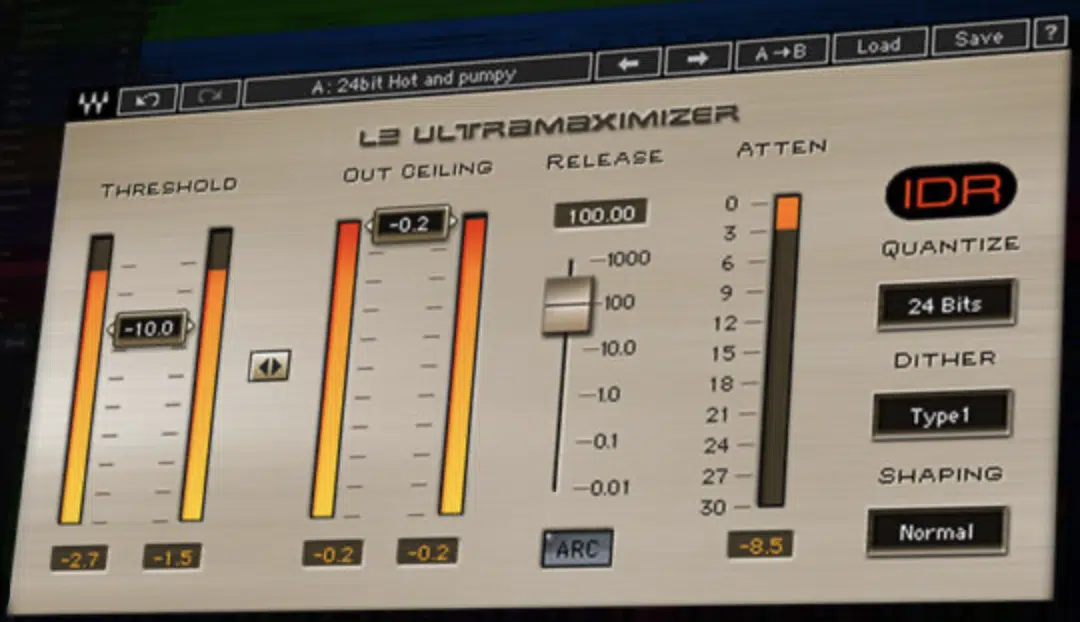
Gain reduction and dynamic range are key concepts in vocal compression.
Compression reduces the dynamic range of the vocal performance, making the quieter parts louder and the louder parts quieter.
This results in a more consistent level across the entire performance, which is essential for a professional-sounding mix.
Gain reduction, the amount by which the compressor reduces the signal, is a critical parameter to manage.
When applying compression to vocals, it’s important to find the right balance.
- Too much compression 一 Can make the vocals sound lifeless/overly processed.
- Too little 一 Can leave them sounding dynamic but inconsistent.
A good starting point is to set a moderate ratio (like 3:1 or 4:1) and adjust the threshold until you see 3-6 dB of gain reduction on the loudest peaks.
Remember, to get your vocals sounding great, it’s a delicate balance.
Another aspect to consider is the attack and release times of the compressor.
A faster attack time can control transients effectively, but it can also flatten the vocal dynamics if not set correctly.
A slower attack allows some of the vocal’s natural dynamics to come through, giving the performance a more lively feel.
The release time should be set to allow the compressor to recover before the next phrase or word, maintaining a natural sound.
Remember, there are great gain plugin options, which you can find here.
-
Applying Compression to Vocals
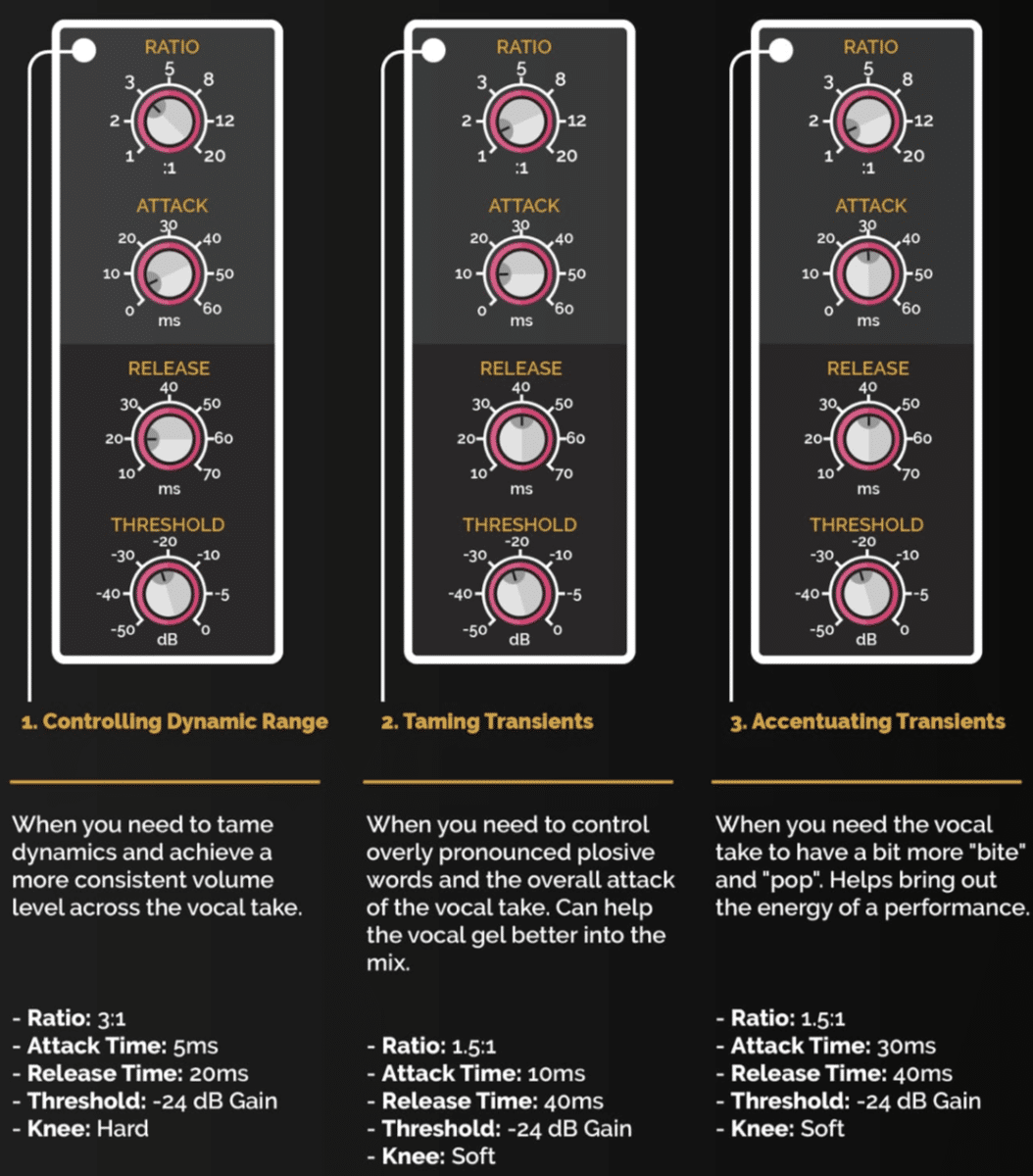
Applying compression to vocals is both an art and a science.
It’s all about enhancing the vocal performance without altering its emotional impact.
Start by setting:
- A threshold 一 That captures the loudest parts of the performance.
- A ratio 一 That provides the desired amount of compression.
For most vocal tracks, a ratio between 2:1 and 4:1 works well, but make sure to listen carefully to the vocal performance as you adjust the compressor settings.
The goal is to achieve a consistent level that allows the vocals to sit prominently in the mix without sounding squashed or unnatural.
-
PRO TIP
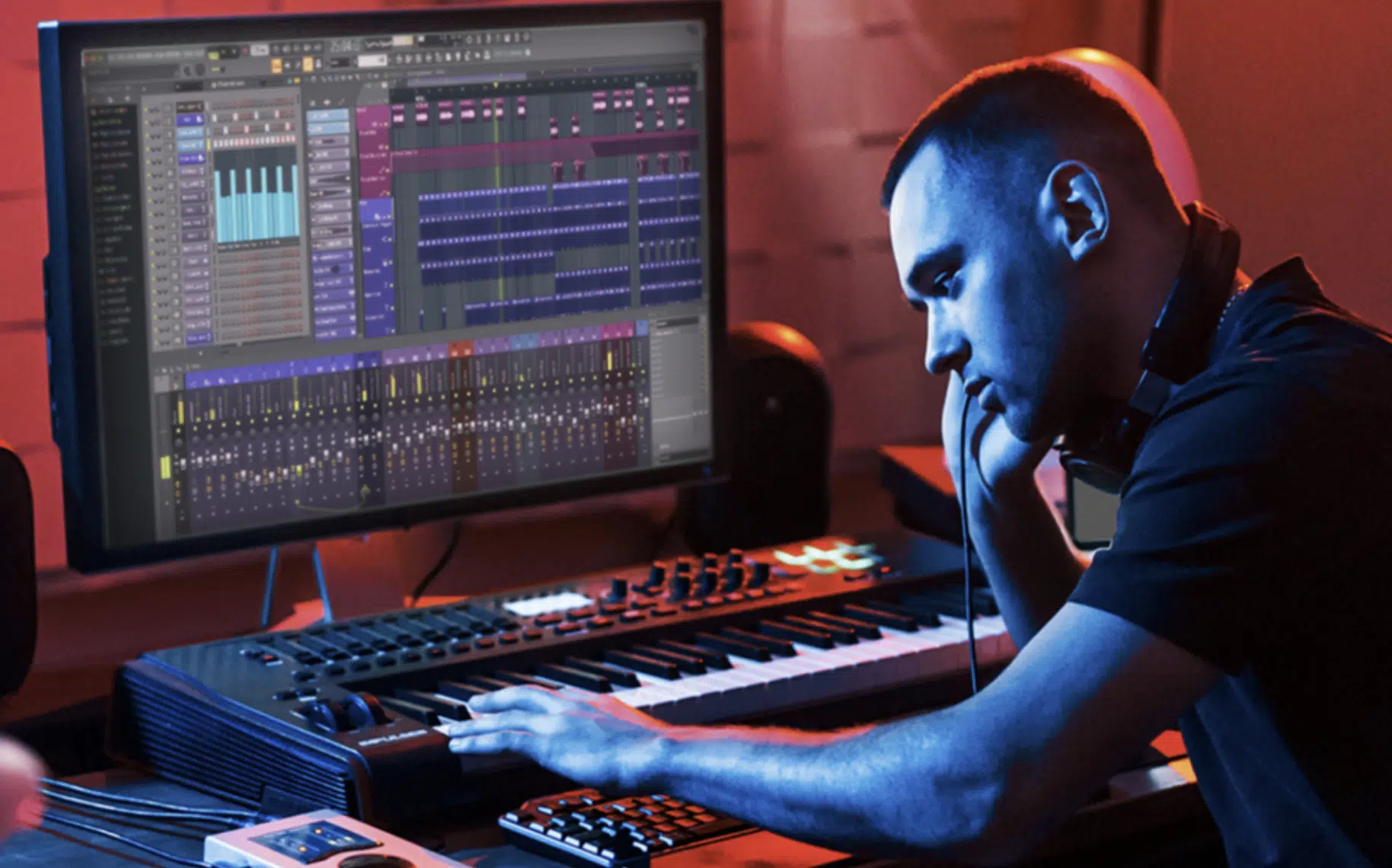
Use your ears more than your eyes when you mix vocals.
While meters and visual feedback are helpful, nothing replaces the importance of listening to how the compression affects the vocal sound.
Also, make sure to experiment with different types of compressors to find the one that suits your vocal track best.
Each compressor has its own character 一 some may add warmth and character to the vocals, while others might offer more transparent compression.
Varying the type of compression, like using serial compression (applying multiple compressors in series), can add complexity and character to the great vocal sound.
Advanced Techniques: Serial Compression
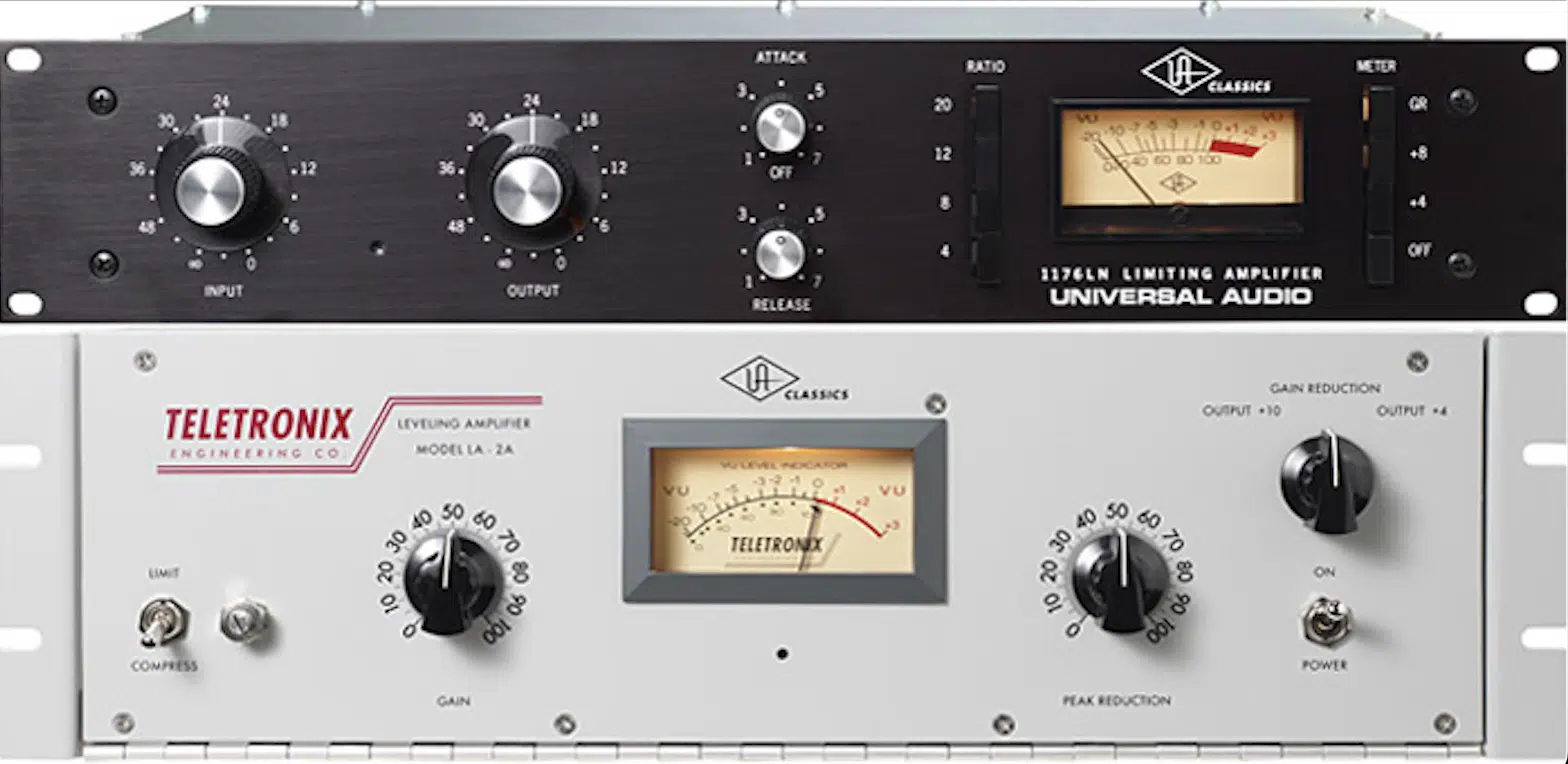
Serial compression is an advanced technique where multiple compressors are used in series on a vocal track.
This method allows for finer control over different aspects of the vocal’s dynamic range.
For example:
- The first compressor 一 Could be set with a slow attack and release to gently even out the overall dynamics
- A second compressor with faster settings 一 Could catch the loudest peaks.
This approach provides a more natural sound, as each compressor does all the heavy lifting without over-compressing the vocal sound.
NOTE: When using serial compression in your vocal mix, it’s important to monitor the gain reduction, in multiple stages, carefully to avoid over-compression.
Otherwise, it can lead to a lifeless and unnatural vocal sound.
The key when mixing vocals is to use subtle settings on each compressor, so they collectively achieve the desired effect.
This technique can be particularly effective in taming dynamic vocal performances while preserving their natural expressiveness.
Adding Spatial Effects to Vocals
Spatial effects are essential when you’re mixing vocals, as they add depth and dimension to the vocal sound. Applying these effects properly can elevate a vocal track from sounding flat and lifeless to vibrant and full of life.
-
Using Reverb and Delay
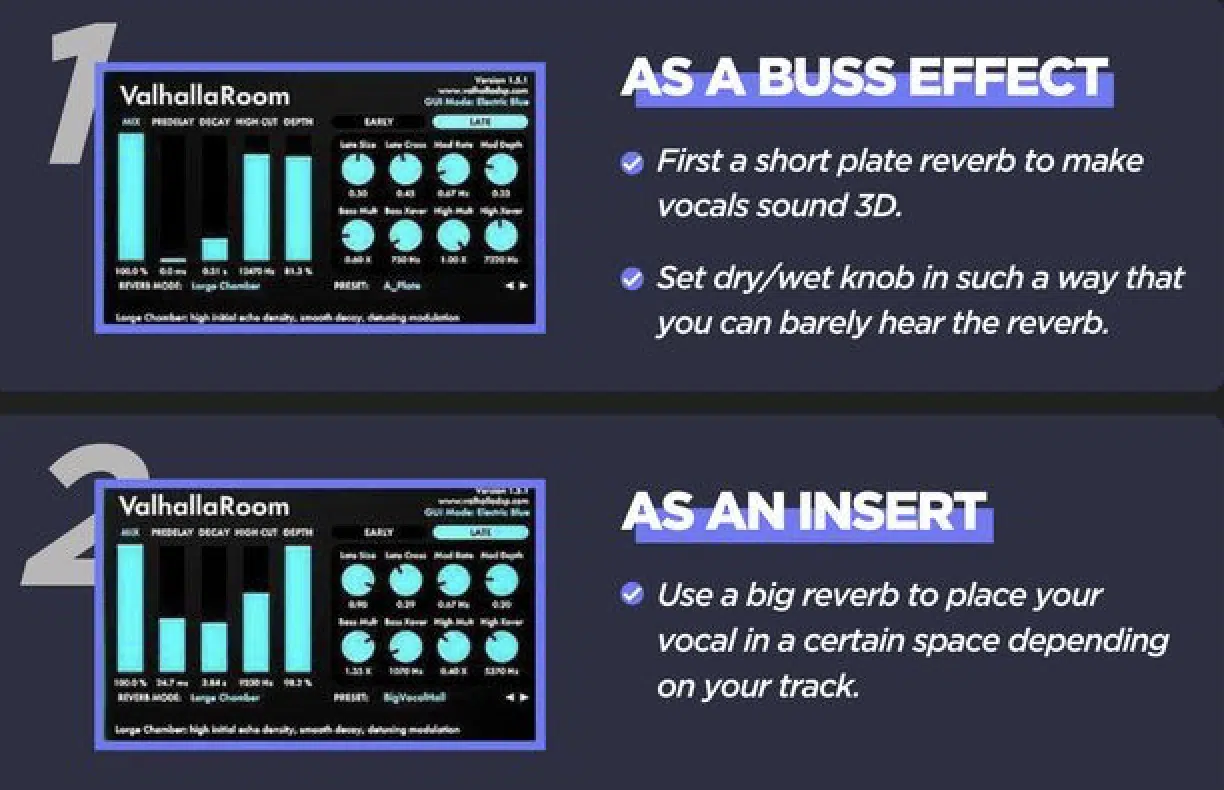
Reverb and delay are two common spatial effects used in vocal mixing, helping your vocals to sound professional.
Reverb adds a sense of space, making the vocals sound as if they’re performed in a physical environment.
The key to using reverb effectively is to match the type and amount of reverb to the style of the track.
For example:
- A larger, more spacious reverb 一 Might suit a ballad or R&B track.
- A tighter, shorter reverb 一 Could be better for a fast-paced pop/hip-hop song.
Delay, on the other hand, creates echoes of the vocal sound, which can add rhythmic interest or a sense of depth.
Using delay in moderation is crucial; too much delay can clutter the mix and distract from the lead vocals.
Timing the delay to the tempo of the track and using feedback controls to manage the number of repeats can produce a vocal sound that enhances the overall musicality of the track.
Both reverb and delay should be adjusted in context with the entire mix to create a pro-sound; you can use delay plugins and reverb plugins for assistance.
This might involve automating the levels of these effects at different parts of the song to ensure they complement rather than overpower the vocal performance.
Remember, your vocals need to sound good on all playback systems.
-
Creating Depth with Volume and Gain Automation
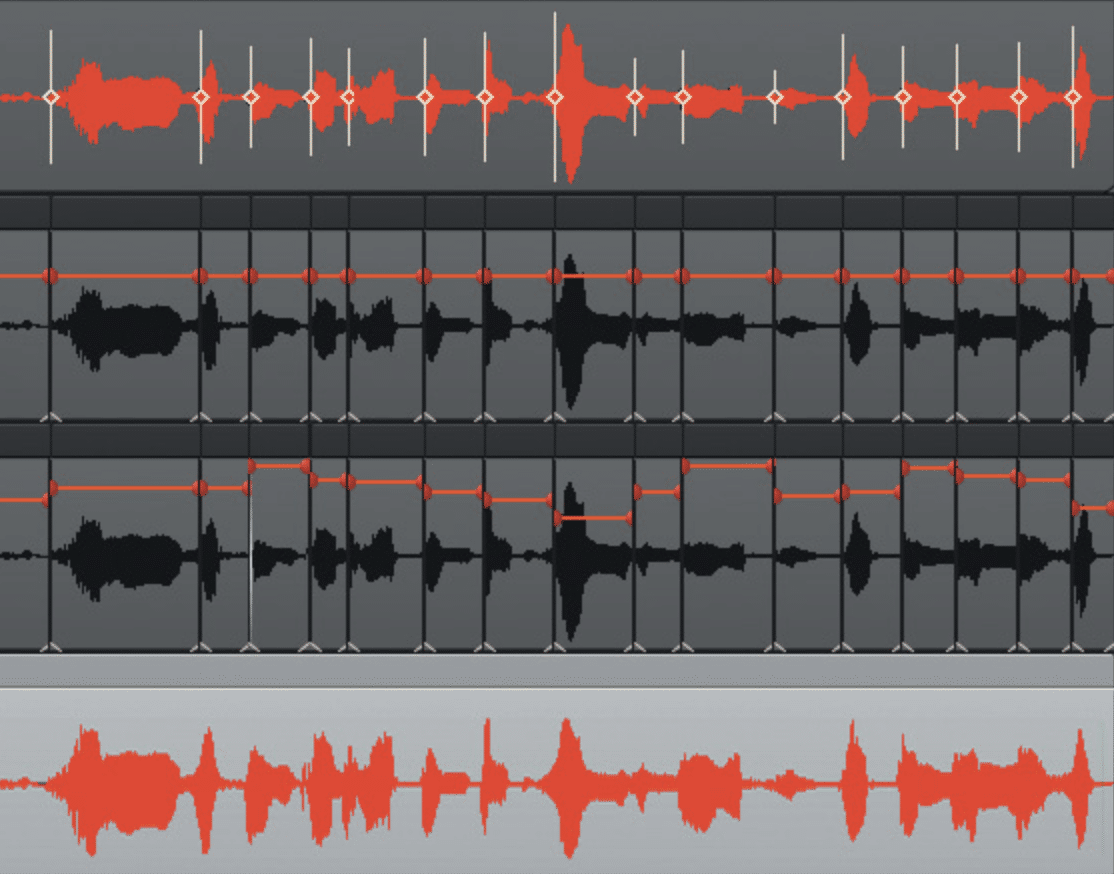
Volume and gain automation play a crucial role in vocal mixing, allowing for dynamic changes throughout the track.
Automation can be used to:
- Bring the vocals forward during key moments, like a powerful chorus.
- Pull them back during quieter sections.
This dynamic movement adds interest and emotion to the vocal performance.
Gain automation is particularly useful for evening out the levels of a vocal performance before it hits the vocal chain.
This preliminary step can make the compressor and EQ work more effectively, as they deal with a more consistent signal.
For instance, automating the gain to reduce the level of overly loud phrases can prevent the compressor from working too hard 一 leading to a more natural vocal sound.
Volume automation, on the other hand, is often used in the final stages of mixing to fine-tune the vocal’s position in the mix.
This could involve subtle increases in volume to highlight certain words or phrases or decreases to blend the vocals into the mix during busier sections.
This level of control ensures that the vocals sit perfectly in the mix, providing a professional and polished final product.
Remember, when mixing vocals, using reference tracks are perfect for scoping out how the professionals add those extra touches.
If you’d like to learn all about using reference tracks effectively, we’ve got you covered.
Enhancing Vocals with Creative Effects
Creative effects offer an additional layer of enhancement to vocal tracks, providing different tone variations, textures, and characteristics. These effects (applied in multiple stages) can range from subtle to dramatic, depending on the creative vision for the track.
-
The Use of Tape Saturation and Subtle Saturation
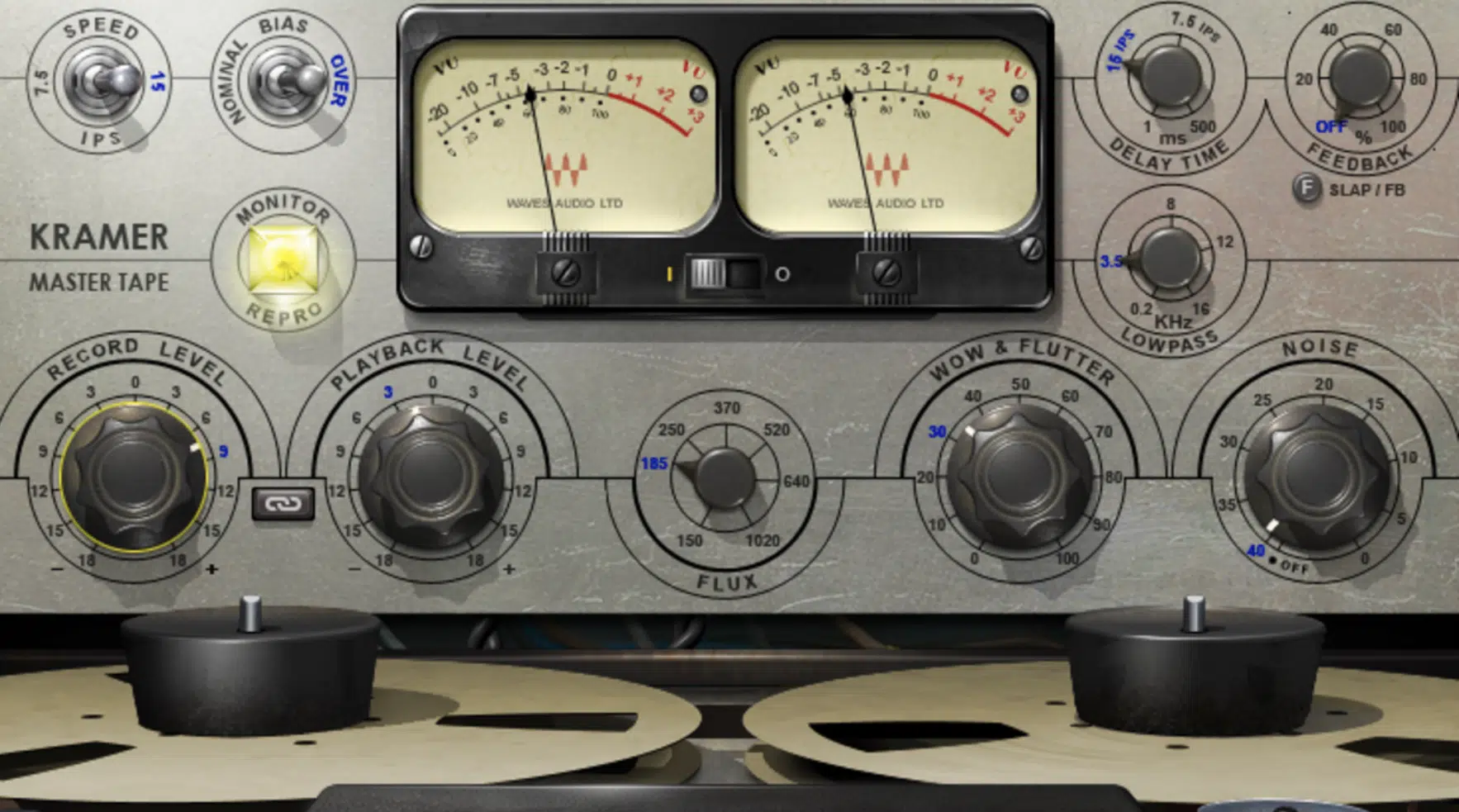
Tape saturation is a technique used to add warmth and character to vocals.
This tape saturation effect emulates the sound of analog tape, which can subtly compress and color the vocal sound.
When applied correctly, tape saturation can make the vocals sound richer and more full-bodied 一 adding a pleasing harmonic complexity.
This effect is particularly effective when you’re mixing vocals in genres like soul, R&B, or rock, where a warm, vintage, great vocal sound is desired.
Subtle saturation, on the other hand, is a more understated effect that can add presence and bite to the vocals without overtly coloring them.
Subtle saturation can be useful in genres like pop or electronic music, where clarity and punch are essential.
Subtle saturation can be achieved with specific saturation plugins designed for this purpose.
The key is to apply just enough to enhance the vocal sound without making it sound over-processed.
-
The Importance of Volume Automation in Vocal Mixing
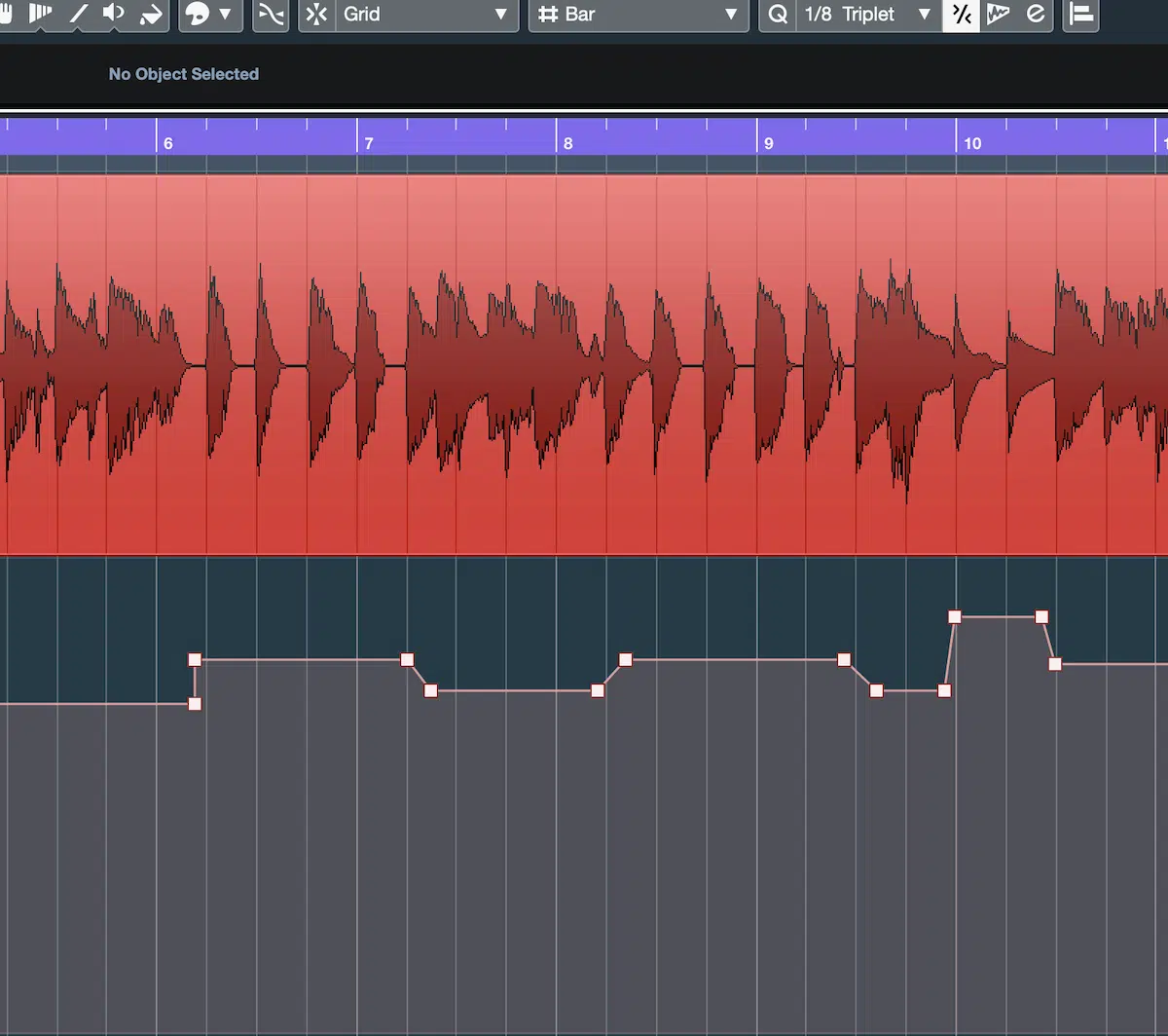
Volume automation is a powerful tool in vocal mixing, allowing for precise control over the dynamics of both lead and backing vocals.
It enables you to highlight certain phrases or words, bringing them to the forefront at key moments in the song.
This can be particularly effective in:
- Drawing the listener’s attention to important lyrical content.
- Adding emotional impact to specific parts of the performance.
Automation can also be used when mixing vocals to smoothly transition between different sections of a song.
For instance, automating a gradual increase in vocal volume can build intensity leading into a chorus, while a decrease can create a sense of intimacy during a verse or bridge.
This dynamic ebb and flow is essential for maintaining listener engagement throughout the track.
In addition to manual volume automation, tools like Waves Vocal Rider can be employed to automate the process 一 ensuring consistent vocal levels throughout the track.
-
Dealing with Unwanted Noise and Background Noise
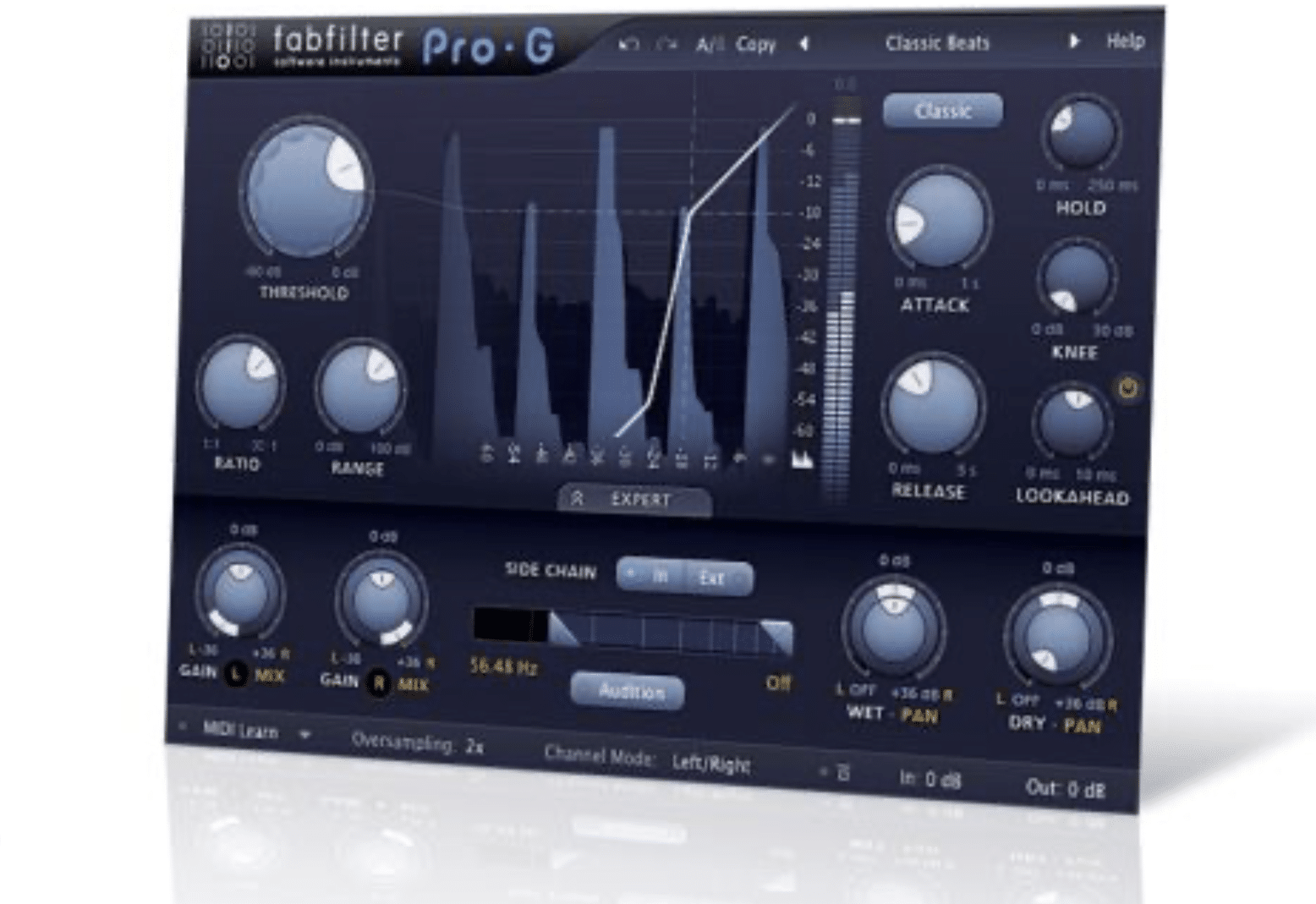
One of the challenges of mixing vocals is dealing with unwanted noises and unwanted background noise.
These noises can detract from the clarity and quality of the vocal recording.
Certain techniques can be effective in minimizing the noise issues, like:
- Using noise gates
- Manual editing
- Specialized noise reduction plugins
Therefore, it will help you craft studio-quality vocals.
For instance, a noise gate can be set to silence the vocal track when the singer is not singing, which reduces the impact of ambient noise.
In some cases, the need to remove unwanted noise can be due to the vocal recording, such as room reflections or equipment hum.
Addressing these issues might require more advanced techniques like spectral repair or targeted EQ cuts.
You can use a de-esser to help remove unwanted low frequencies and tame harsh sibilance.
This will help you clean up the vocal sound as a whole.
NOTE: It’s important to strike a balance when removing noise, as over-processing can strip away the natural character of the vocals.
The goal is to reduce distractions without making the vocals sound artificial.
Secret sauce techniques like subtle EQ adjustments and gentle noise reduction can help maintain the human voice’s natural qualities while eliminating unwanted noises.
In general, it will have your vocals sounding great and polished.
Side note, if you’d like to learn how to use noise creatively in your tracks, we’ve got you covered.
-
Vocal Doubling for Thickness
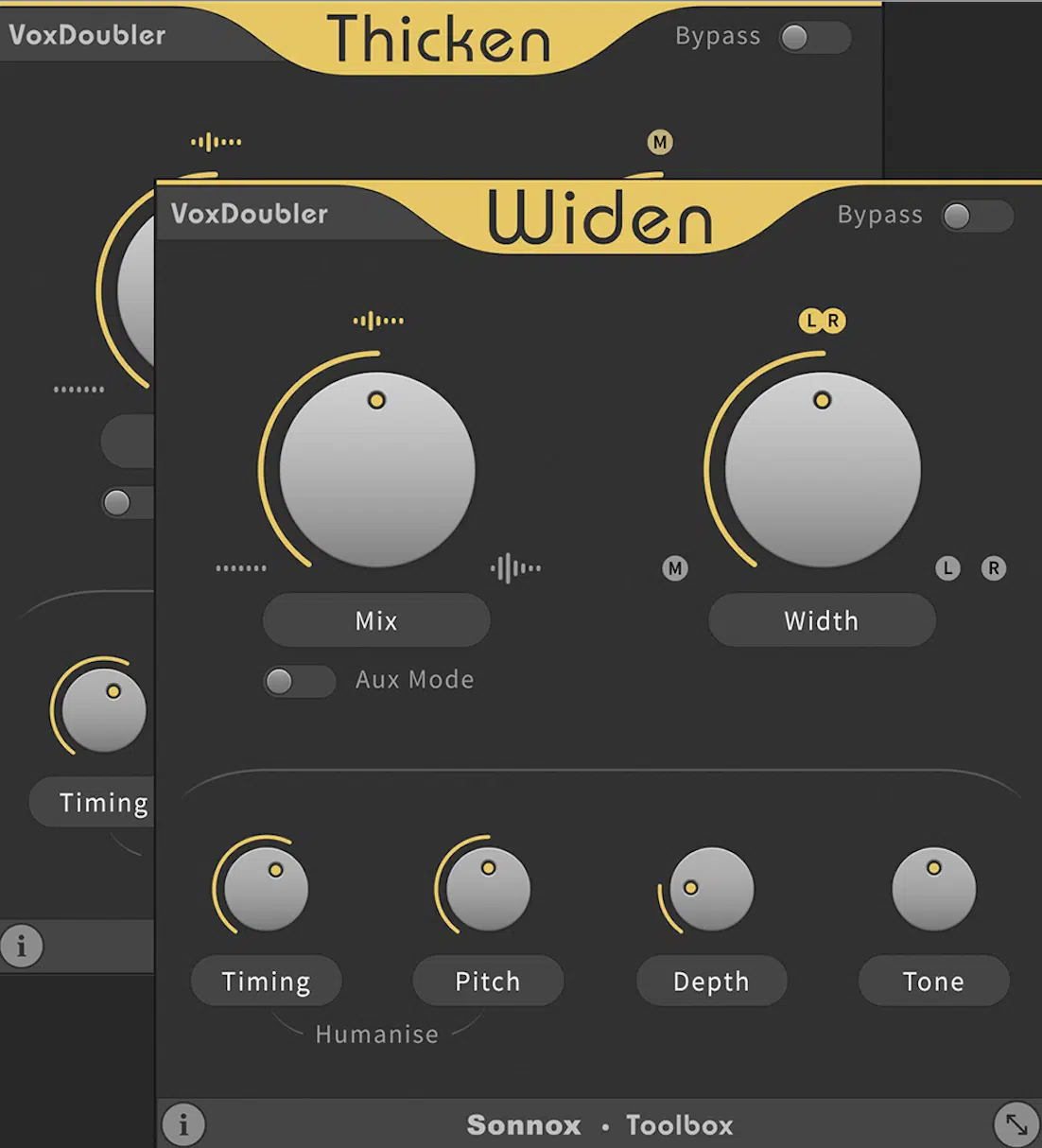
Vocal doubling is a vocal-recording technique used to add thickness and richness to the vocal sound.
It involves recording multiple takes of the same vocal part and layering them in the mix.
This creates a fuller, more powerful vocal sound, often used in genres like pop, hip-hop, and rock to make the lead vocal shine.
When done correctly, vocal doubling can enhance the emotional impact of the vocal performance.
The key to effective vocal doubling (and pro-sound) is precision in timing and pitch.
The doubled takes of your vocal recording should be closely aligned with the main vocal to avoid:
- Timing issues
- Phase problems
Sometimes, slight variations in pitch and timing can add depth and a desirable thickness to your vocal recording.
However, too much discrepancy can lead to a messy and unfocused vocal sound.
In addition to manual doubling, there are plugins and techniques that can simulate the effect of vocal doubling, such as chorus effects or automatic double trackers.
These vocal recording tools can be useful when you want to achieve the thickening effect of doubling without the need for multiple vocal takes.
Pro Tip: Utilizing AUX Channels and Busses
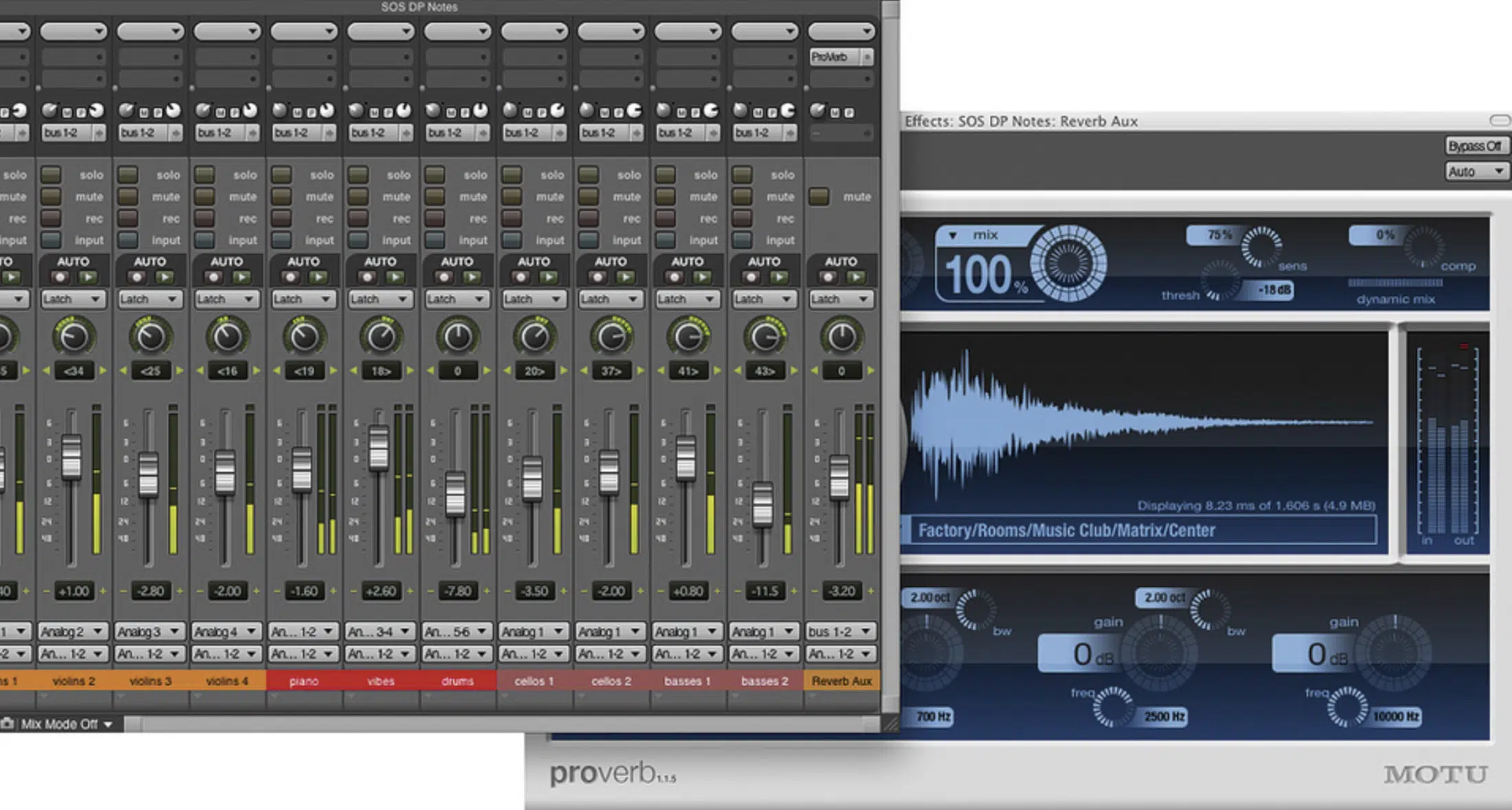
AUX channels and busses play a critical role when mixing vocals, particularly when dealing with multiple vocal tracks.
These include:
- Lead vocals
- Backing vocals
- Ad-libs
By routing these tracks to a common bus or AUX channel, you can apply processing to them collectively, ensuring a cohesive sound.
For example, you can route all backing vocals to an AUX channel and apply the same reverb 一 creating a unified spatial effect.
Busses are also useful for applying group compression, which can glue the vocal tracks together and make them sit better in the mix.
NOTE: This is particularly effective when dealing with a dense mix, where maintaining clarity and cohesion among the vocal elements is essential.
Additionally, when you’re mixing vocals, using AUX channels for effects like reverb and delay allows for greater control over the wet/dry vocal balance (left and right side).
This makes it easier to automate these effects throughout the track.
Mixing Vocals: Final Thoughts
The process of mixing vocals is much more than just a technical necessity 一 it’s a vital element in bringing your music to life.
All of the techniques and insights we’ve covered today will help you transform your vocal tracks into clear, professional, and chart-topping masterpieces.
Remember, mixing vocals like a pro is what can set a great track apart from the rest, regardless of genre.
And now, armed with the knowledge from this guide, you have the tools and understanding to elevate your vocal tracks in ways you’ve never even imagined.
To help you master the process of mixing vocals, it’s alway great to check out pristine vocals, which is where these show-stopping Free Vocal Samples come into play.
This legendary collection includes 20 professionally-crafted vocal samples, mirroring the styles of the biggest hit songs in modern music.
These samples are incredibly versatile, designed to seamlessly integrate into your tracks, and mixed to perfection.
Plus, all files are cleared for both personal and commercial use, which gives you the freedom to use them however you please.
So, as you continue your journey in music production, remember that mixing vocals is an art that requires patience, practice, and a keen ear.
Keep exploring, keep learning, and most importantly, keep creating epic music that speaks to you and your audience.
Until next time…







Leave a Reply
You must belogged in to post a comment.